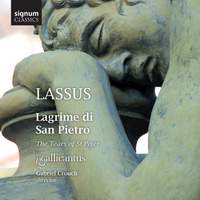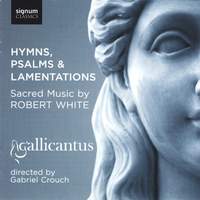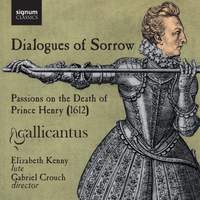Interview,
Gabriel Crouch on music from the time of Queen Mary
 The phantom pregnancy of Mary I in 1555, and the consequent lack of a Catholic heir to the English throne, proved to be a turning point in the nation's history. British vocal consort Gallicantus have put together an imaginative album of music tracing the emotional contours of that anxious year, from hope from doubt and ultimately to despair.
The phantom pregnancy of Mary I in 1555, and the consequent lack of a Catholic heir to the English throne, proved to be a turning point in the nation's history. British vocal consort Gallicantus have put together an imaginative album of music tracing the emotional contours of that anxious year, from hope from doubt and ultimately to despair.
I spoke to their conductor, Gabriel Crouch, about his choices of music and his approach to the performance of Tudor repertoire.
The concept behind this album is a fascinating one – exploring one particular year which could easily have seen history take a very different turn. Where did the idea for this project first come from?
I can remember being taught as a child that Mary Tudor’s reign was a dark interlude in the English sixteenth Century (all part, no doubt, of the preferred narrative portraying Queen Elizabeth as the central figure of a cultural ‘golden age’), but the truth is that in many ways, Mary’s accession to the throne and the restoration of English Catholicism was a moment of unparalleled liberation for England’s greatest composers, suddenly free of the shackles of Edward VI and Thomas Cranmer.
It was this growing awareness of an explosion in productivity for English composers in the first year of Mary’s reign that drew me to look more closely at what the prevailing narratives of the day were – and this is what led me to this especially emotive story, in which a monarch who is traditionally portrayed as cold and severe can be seen in a more fragile and human light, subject to this most quotidian yet crushing of personal tragedies.
The music of the preceding generation of English Catholic musicians – Taverner, Cornysh, Fayrfax and so on – is conspicuously absent from the disc. Did these composers’ works simply fall out of use by Mary’s reign, or did you make an intentional decision to focus on those who were still alive and writing in 1555?
It will be clear to listeners that we’ve had to use a certain amount of imagination in connecting the story of Mary’s phantom pregnancy to a tracklist of musical works. Anything else would be impossible, especially given that we made the decision to avoid some of the more famous and large-scale works which have been traditionally associated with Mary’s hope for an heir – most notably the Tallis Missa Puer Natus Est. But we certainly wanted all the music to bear the atmosphere of the first two years of Mary’s reign, and in almost all cases to have a plausible case for composition near the time of the phantom pregnancy, which rules out the preceding generation entirely.
On listening closely, we noticed that you’ve gone for the English pronunciation of Latin in the choral works – strange-sounding to modern ears, but historically correct. How important do you think it is to emulate the contemporary performance practices when singing music from this period?
I’m interested in current thinking about performance practice, and I’m happy for it to be discussed among my colleagues, but it is far from my highest priority in making performance decisions. Gallicantus has its own way of rehearsing and making music (and a reason for being together) which draws us to seek interpretations which, first and foremost, make musical and rhetorical sense to us. So long as we address this basic goal, we are then happy to address questions pertaining to performance practice, which might involve pitch, voicing, underlay, pronunciation etc. But we know full well that we can’t make this music sound as it did in 1554.
Can you tell us anything about your future plans? This is now your second album to focus on a particular year’s music – might we see more along these lines?
You’re quite right – I’m drawn to musical narratives like this, and I’m hoping that this will be the first of two recordings which address the first two years of Mary’s reign. And yes, you will see more along these lines, but I hope you’ll forgive me for keeping my undeveloped ideas for future recordings to myself, for now…!
Queen Mary's Big Belly was released at the beginning of February on Signum Records.
Available Formats: CD, MP3, FLAC, Hi-Res FLAC
Other recordings by Gallicantus
Available Formats: CD, MP3, FLAC, Hi-Res FLAC
Available Formats: CD, MP3, FLAC
Available Formats: CD, MP3, FLAC, Hi-Res FLAC







